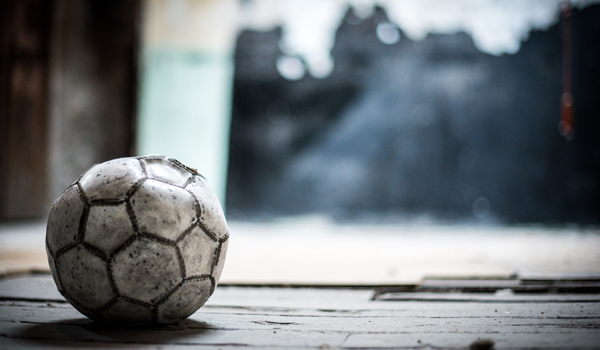
Many people, when they first hear about minimalism, or as they begin their own personal journey towards it, typically run into this question: What do I do with the sentimental things I’ve collected over the years?
It is a question I am asked often. And an important one.
Here is my advice:
1. Remember that less is different than none.
No one is saying that you have to get rid of everything you have an emotional attachment to—but I do think you will find benefit in owning less.
Here’s what I mean by that: When my wife’s grandmother passed away a number of years ago, she came home with a small cardboard box of things collected from her grandmother’s apartment—items that reminded her of her beloved grandma. We then promptly put that cardboard box in the basement and would only notice it when we were cleaning up the basement—which rarely happened.
After we found minimalism and began getting rid of the stuff we didn’t need, we eventually ran into this cardboard box in the basement. When we did, my wife asked herself, “Okay, what am I going to do here?”
Eventually, she decided she would keep three things from the box, the three things that “most represented her grandmother.” She kept a candy dish. She kept a lapel pin, and she kept a Bible. The candy dish is now in our living room, and we see it every single day. The pin, she put on one of her coats, and she wears it occasionally. The Bible, she put in her nightstand next to her bed.
And now, because we own fewer things, they have brought a greater sense of value to that relationship. These items, now being used, serve as a more faithful reminder to us of her grandmother and her influence on Kim’s life. Less became better than more. This is often the case with sentimental belongings.
2. Your memories do not exist in the item.
The memories we cherish exist in our minds, they exist in our hearts and our souls, not in physical objects.
In our heart is where the memories live, where the influence of the person resides, or the accomplishment surrounding an event takes root. When we remove an item, we think sometimes we’re removing the memory—but we aren’t. The memories remain.
You may find it helpful to take a picture of the item before you get rid of it, just so you can look back and prompt that memory. But removing the item is not going to remove the memories.
3. Our emotional attachment to things can actually provide motivation for owning less.
Think of the sentimental things, and the things you have an emotional attachment to. They typically represent one of three things: 1) They represent an important relationship; 2) They represent an important accomplishment; or 3) They represent an important experience… so you bought the t-shirt to bring home with you.
These, you see, are the activities that add meaning, and purpose, and significance to our lives. Our relationships, our accomplishments, and our experiences. This is where the value of life resides.
But if all the things we’ve accumulated over the years are keeping us from relationships, accomplishments, experiences, then we should get reduce the number of things we own. Remove the burdens that are holding us back from those experiences, so we can enjoy even more of the things that mean the most to us.
Lastly, keep in mind, if you are beginning on your path to minimalism, and sentimental things is where you’re starting, you are going to have a hard time.
Let’s start easy, okay? Get rid of some of the things you know you don’t need. Go through your closet. Or go through your kitchen.
Begin removing some of the possessions you know don’t need to be a part of our life anymore. Remove those, and as you do, you’ll find increased motivation to own less. You’ll learn the lessons that will equip you perfectly for when you do get to these sentimental things—and you’ll be far more equipped to handle them effectively when you do.
from Becoming Minimalist https://ift.tt/2LUBX1J
Aucun commentaire:
Enregistrer un commentaire